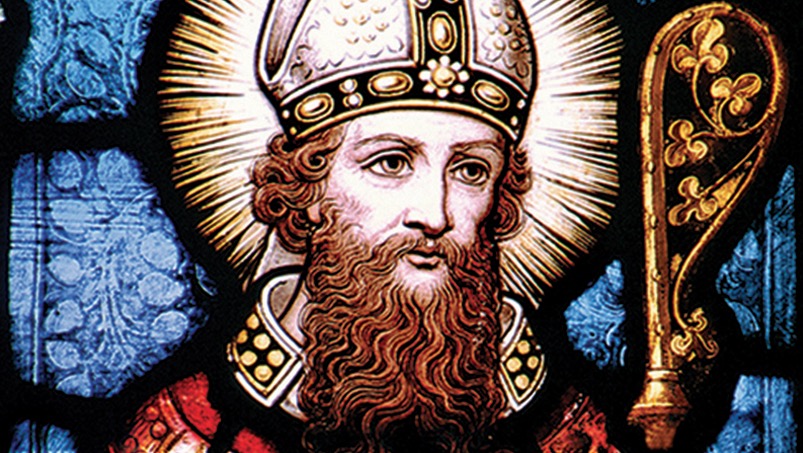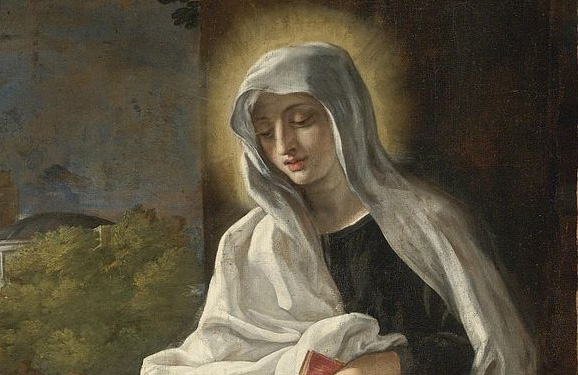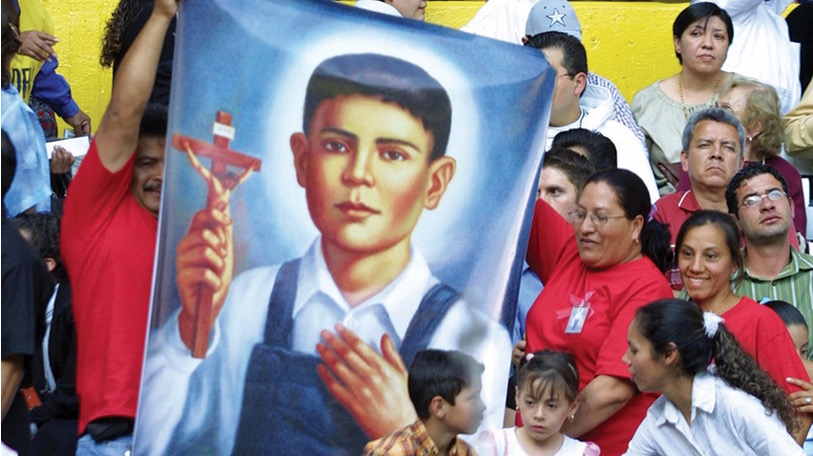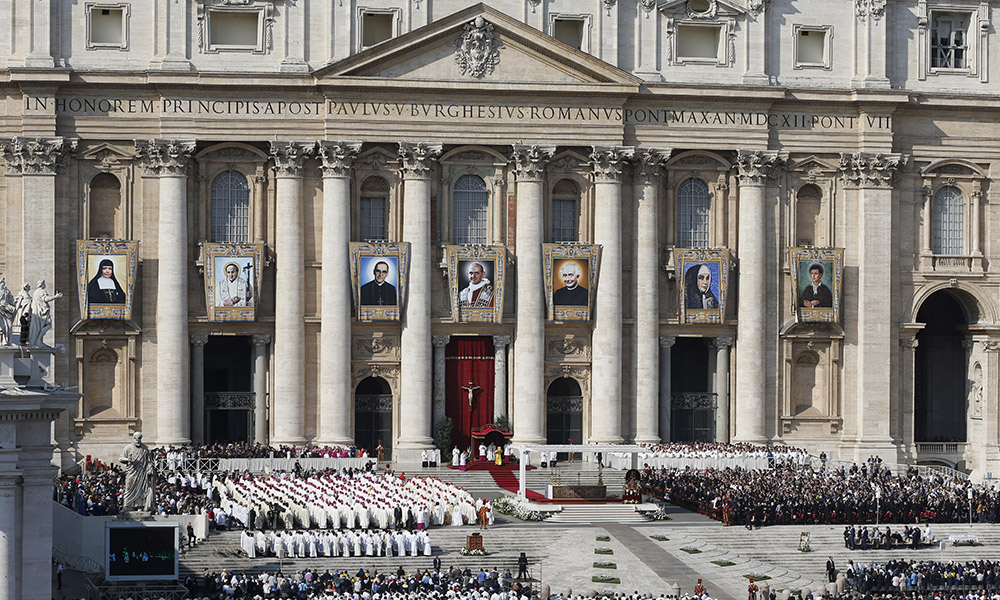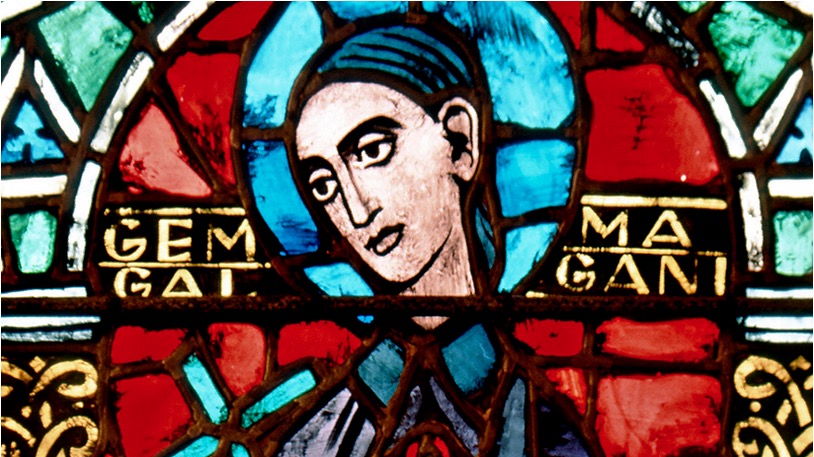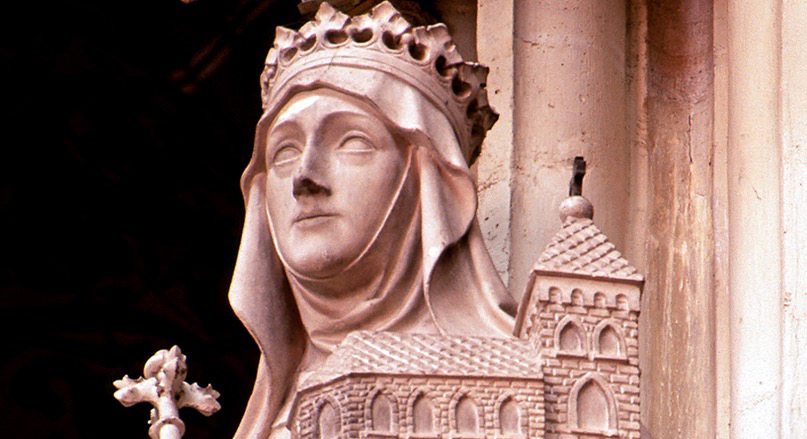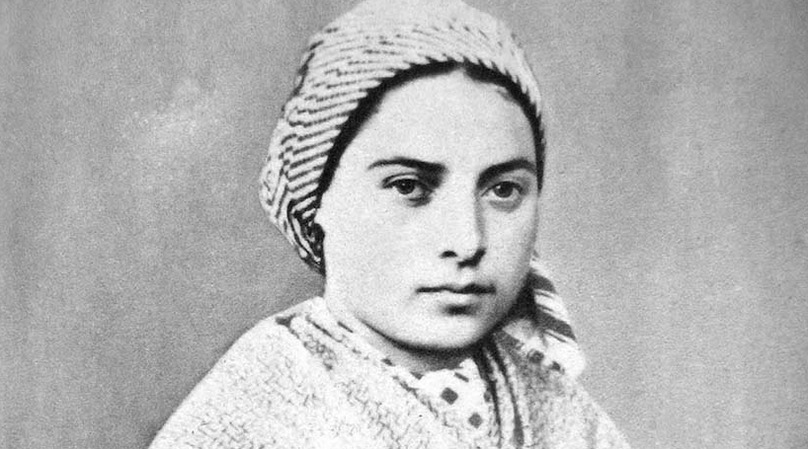Few annual events are more universally anticipated and celebrated than St. Patrick’s Day. It seems that no place or people on earth are immune from the activities, the frivolities, the food and drink that take place every March 17. The day is so highly regarded that during the season of Lent, if St. Patrick’s Day falls on a Friday (which happens about every six years) Catholic bishops in many dioceses lift the law mandating abstinence from meat on that day. Catholics who accept the dispensation are asked to perform some other penitential practice or, in some locales, abstain from meat on another day near that Friday.
Surprisingly, given the popularity and influence of the day, many revelers know little about St. Patrick the man. They might be surprised to learn that he never drank green beer (not even a Guinness), never ate corned beef and cabbage, never drove snakes out of Ireland and had no leprechaun friends. The majority of St. Patrick’s Day customs, myths and fables have been perpetuated and instituted over a period of 16 centuries. Stripping away the widespread secular activities, we discover a holy person — a saint — who spent more than 30 years successfully proclaiming the Gospel message, the gift of faith to the people of Ireland. Prayerfully recalling and recognizing his life as God’s chosen missionary is how to uncover the true spirit of St. Patrick.
Youth and Visions
Born in the late fourth century in the area now known as Scotland, Patrick was raised as a Christian but gave little notice to his religion. At age 16 he was kidnapped and carried off to Ireland, where he was sold as a slave to a landowner. For the next six years he tended the owner’s flocks. This was a lonely job, with days and nights spent out on the countryside in solitude, in all sorts of weather. It was during this isolation that he experienced an overwhelming spiritual renewal. According to his own words, he began praying almost constantly, and his indifference toward God turned to adulation and love.
When Patrick was 22 he had a dream that he was meant to escape from his captivity and return to his homeland. Believing this was a heavenly message, he spent some 20 days walking 200 miles to the sea, where he was able to find transportation on a ship to Gaul (France). God, in his surprising, unpredictable ways, was calling this unknown youth to holiness, to sainthood, to become the apostle to Ireland.
Eventually returning to his family, Patrick soon would experience another vision or dream. He claimed during the dream to have heard the voice of the Irish, “We beg you, holy youth, that you shall come and walk again amongst us.” Patrick discerned that he was destined to return to Ireland and bring the Good News to a people unaware of Jesus Christ. It would be 20 years before he could fulfill this dream.
Divinely inspired, Patrick sought to be ordained as a priest, but facts about these years of his life differ among writers. The saint tells us that on his way to becoming a bishop, at one time he was rejected by other bishops based on a “sin” or incident that occurred early in his life. He overcame this setback but was confronted by those who questioned his reason for wanting to return to Ireland. People thought he was demented to choose to go back to a place where he had been held as a slave — a place considered the end of the known earth and populated by barbarians.
As anxious as he was to return to Ireland, Patrick wanted no favors or shortcuts in his rise to the episcopate. He knew that his assignment as a missionary would come from the bishop he served in concert with the pope and, thus, he readied himself as best he could.
Mission in Ireland
Even before Patrick began his mission, parts of Ireland had been exposed to Christianity.
Mariners and traders from countries converted to Christianity often visited Ireland; there also were other Christian slaves in the manner of Patrick. These groups widely were scattered, and in 431 Pope St. Celestine I (r. 422-32) sent Bishop Palladius to shepherd and organize the dispersed Christians. The mission of Palladius was short-lived, and within a year he either died or returned to Europe.
Now was Patrick’s opportunity. In 432, St. Germanus of Auxerre, a bishop, oversaw Patrick’s elevation to bishop and sent him (along with several assistants) to Ireland. The saint’s objective was to minister to the Christians in Ireland and evangelize to a people dismissed as heathens by most of the world.
Jesus said to his apostles: “Behold, I am sending you like sheep in the midst of wolves; so be shrewd as serpents and simple as doves’” (Mt 10:16). This was Patrick’s strategy throughout his ministry. He did not seek to change the culture of the people he wanted to convert; instead, he shrewdly and simply introduced Christianity in a way that made it take root and flourish in their pagan society. While the soil was fertile, sowing the Good Seed in this vast land was not without trial.
In fifth-century Ireland the population lived in thousands of tribal communities, or clans, throughout the country. Cities and city life were virtually nonexistent. Each tribe was ruled by a king; everyone lived off the land, was beholden to the king, and few had ever heard the name Jesus Christ.
They were idol worshippers with many gods, like the Romans during the time of Christ. Patrick and his group would seek out the tribal leader or king and, using bribery if necessary, try to evangelize the king and obtain permission to preach to the people.
Patrick knew the language from his years as a slave and had some knowledge of the culture; however, these people worshipped many different gods, and convincing them to worship the one true God and embrace the Way, the Truth and the Life was challenging. Besides getting approval to preach to the people, Patrick would ask the king for land on which to build a church. In each location, Patrick ordained individuals to carry on his work.
Walking into a tribe and seeking an audience with the king was not without peril. Patrick and his group were captured more than once, but thanks to the Holy Spirit, they were never harmed.
While Patrick did not attack the culture of these people, he made no such exception for the Druid priests. Druids were an ancient Irish society steeped in mystical beliefs fostered by evil priests promoting the ideas of reincarnation and human sacrifices. These priests had great influence among certain tribes, and Patrick often came face to face with this evil. Divine intervention was on Patrick’s side during these confrontations, and the Druid’s magic and superstitions were repeatedly refuted by the power of the Gospel as witnessed by Patrick. Legend holds that the shamrock was a sacred plant of the Druids, and Patrick used it to explain the Trinity.
The Results
Historians estimate that during Patrick’s mission, thousands of people were baptized, some 300 bishops ordained and hundreds of churches erected throughout Ireland. Because of his zeal, passion for Christ and commitment to his missionary calling, an entire nation became Christian.
According to the 1905 biography on St. Patrick by John B. Bury, “He organized the Christianity that already existed; he converted kingdoms which were still pagan, especially in the West; and he brought Ireland into connexion with the Church of the Empire, and made it formally part of the universal Christendom.”
Patrick died in 461 and was made a “local” saint in the seventh century. At that time there was no Church institutionalized canonization process, and people were called saints in local communities or states based on popular acclaim. Certainly Patrick was deserving of sainthood, and in the 17th century his national feast day was added to the annual Catholic liturgical calendar. Besides Ireland, St. Patrick is the patron saint of Nigeria and of many dioceses and churches around the world.
D.D. EMMONS writes from Mount Joy, Pennsylvania, and is a longtime contributor to OSV publications. This article originally appeared in The Priest magazine.

